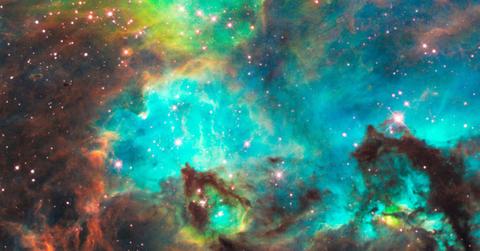Astronomers Dub Repeated Bright Flares From Exploded Star's 'Stellar Corpse' as the 'Tasmanian Devil'

Astronomers have observed one of the rarest and strangest phenomena.
Astronomers have been left speechless as the "stellar corpse" known as the "Tasmanian Devil" seems to be reenacting its death in what might be one of the rarest occurrences ever observed.
Knewz.com reported that the Tasmanian Devil stellar corpse is located around 1 billion light-years from Earth.
A "stellar corpse" is a term in astronomy that refers to the remnants of a "dead star," or a star that has, so to speak, extinguished.
In this case, "reenacting its death" means that astronomers have observed energy signatures being radiated from the stellar corpse which are similar to the explosion, or supernova, that caused the star's death.
The phenomenon has been observed multiple times since the distant star exploded in September 2022, CNN reports.
According to CNN, the star that is now the stellar corpse known as the Tasmanian Devil did not die with an ordinary supernova, but rather with a rare type of explosion called a Luminous Fast Blue Optical Transient, or LFBOT.
The primary difference between ordinary supernovas and the LFBOTs is that it takes weeks or even months for the bright light from a supernova to die out. On the other hand, the bright light from an LFBOT, which has a light blue hue as the name suggests, dims out within days.
It was the same with the Tasmanian Devil stellar corpse as well, but the fact that it has been able to recreate its so-called moment of death in terms of radiating energy signatures has set it apart from all the other stellar corpses that extinguished with LFBOTs.
"Amazingly, instead of fading steadily as one would expect, the source briefly brightened again — and again, and again... LFBOTs are already a kind of weird, exotic event, so this was even weirder," said Anna Y.Q. Ho, assistant professor of astronomy at Cornell University’s College of Arts and Sciences.
She added, "No one really knew what to say... We had never seen anything like that before — something so fast, and the brightness as strong as the original explosion months later — in any supernova or FBOT (fast blue optical transient). We’d never seen that, period, in astronomy."
Professor Ho had created software that examined a half-million transients, which Nature describes as typically short-lived "astronomical phenomena with durations of fractions of a second to weeks or years." The transients that the software studied were detected by the Zwicky Transient Facility in California on a daily basis.
It is this software that initially alerted Ho and her collaborators of this strange discovery, as they observed the explosions caused by the "death" of the distant star to be somewhat repeated by the Tasmanian Devil over a period of months.
- Blast from the Past: NASA Telescope Captures Vivid Image of Cosmic Fallout From Star That Exploded 3 Centuries Ago
- Deep-Space Discovery: Powerful NASA Telescope Locates 'Ghostly' Remote Galaxy Enveloped in Cosmic Dust Clouds
- Dazzling Discovery: Giant Luminous Galactic Core ‘Hiding in Plain Sight’ 500-Trillion Times Brighter Than Sun
The paper regarding these findings, which was published in Nature, noted that the transient flares from the Tasmanian Devil lasted for a few minutes at a time, were "highly energetic, and are probably nonthermal."
CNN further reported that, according to Professor Ho, 15 observatories noticed 14 transient flares from the Tasmanian Devil over a span of 120 days. She said that these 14 "irregular light pulses" were just a fraction of the total number of such flares that radiated from the stellar corpse.
The paper published in Nature suggests that the source of these flares must be "a compact object," like a dense neutron star or a black hole, which was formed during the original LFBOT caused when the distant star "died."
Never miss a story — sign up for the Front Page Detectives newsletter. Be on the scene the moment news breaks.
Professor Jeff Cooke of Australia’s Swinburne University of Technology and the ARC Centre of Excellence for Gravitational Wave Discovery, who co-authored the study published in Nature said regarding the implications of the discovery, "This settles years of debate about what powers this type of explosion, and reveals an unusually direct method of studying the activity of stellar corpses."
"It pushes the limits of physics because of its extreme energy production, but also because of the short duration bursts... Light travels at a finite speed. As such, how fast a source can burst and fade away limits the size of a source, meaning that all this energy is being generated from a relatively small source," he added.
Become a Front Page Detective
Sign up to receive breaking
Front Page Detectives
news and exclusive investigations.
